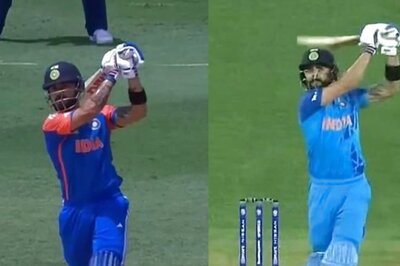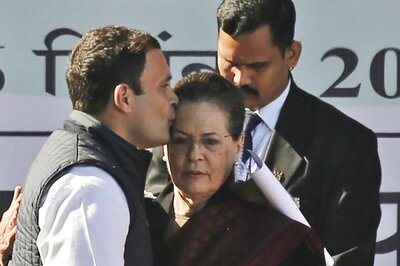
views
Belly Button Piercing Types
Standard navel piercing The standard or classic navel piercing goes vertically through the ridge of skin above your belly button. The top half of the jewelry is visible above your belly button, while the bottom half is visible inside the belly button cavity. Meet the wikiHow Experts Roger Rodriguez is a piercing specialist and owner of Ancient Adornments Body Piercing with over 25 years of piercing experience. Natalie Rose Pokes is a professional piercer and co-owner of Gunns and Roses Tattoo and Piercing Parlor. David Wilkins is a professional body piercer and owner of The Axiom Body Piercing Studio with over 30 years of experience. He also runs an educational YouTube channel about body piercings. Stephanie Anders is a piercing specialist and owner of Royal Heritage Tattoo and Piercing with over 10 years of experience. Type of jewelry: Curved barbell, J-curve barbell, captive bead ring Good candidate: You have a protruding ridge of skin above your belly button. Your piercer will also check how your belly button stretches and moves to ensure it’s right for you.
Inverse navel piercing The inverse navel piercing (also known as the lower or bottom navel piercing) goes vertically through the ridge of skin below your belly button—it’s like the opposite of the standard piercing. The top half of the jewelry sits inside the belly button cavity, while the bottom half rests below your belly button. Type of jewelry: Curved barbell, J-curve barbell, captive bead ring Good candidate: You have a protruding ridge of skin below your belly button. This is a good option if you have an outie belly button or you don’t have enough of an upper ridge to get a standard piercing. Your piercer will also check how your belly button stretches and moves to ensure it’s right for you.
Floating navel piercing The floating navel piercing is pierced the same as the standard piercing, except the bottom half of the jewelry is a flat disc that’s hidden inside the belly button cavity. This makes it look like the top half of the jewelry is floating above the belly button, hence the name. Type of jewelry: Curved barbell with flat disk Good candidate: You have a protruding ridge of skin above your belly button, and your navel folds in a way where the standard piercing would cause discomfort or irritation. This is often a good option if you have an outie belly button.
Double navel piercing The double navel piercing typically refers to a combination of the standard and inverse piercings, leaving you with a piercing above and below your belly button. However, it can also refer to getting 2 side-by-side standard or inverse navel piercings. Type of jewelry: Curved barbell, J-curve barbell, captive bead ring Good candidate: You have a protruding ridge of skin above and below your belly button. Your piercer will also check how your belly button stretches and moves to ensure the jewelry is right for you and doesn’t cause discomfort.
Horizontal navel piercing The horizontal navel piercing is a type of surface piercing, which is a piercing placed under the surface of the skin without going through a distinct ridge. As the name implies, this piercing is positioned horizontally and can be either above, below, or to either side of the navel, with both ends of the jewelry visible. Type of jewelry: Long straight or curved barbell Good candidate: Most people, but your piercer will check how your belly button stretches and moves to ensure it’s right for you.
Double horizontal navel piercing The double horizontal navel piercing usually refers to 2 horizontal piercings placed around the belly button. This could be horizontal piercings placed above and below the belly button, or piercings placed on the right and left sides of the belly button. Type of jewelry: Long straight or curved barbell Good candidate: Most people, but your piercer will check how your belly button stretches and moves to ensure it’s right for you.
Multi navel piercing The multi navel piercing is 2 or more piercings placed around your navel in any combination. For instance, this could be a combination of the double vertical piercings and double horizontal piercings. Type of jewelry: Curved barbell, J-curve barbell, straight barbell, captive bead ring Good candidate: You have a protruding ridge of skin above and below your belly button. Your piercer will also check how your belly button stretches and moves to ensure the jewelry is right for you and doesn’t cause discomfort.
How to Get a Belly Button Piercing
Find a reputable piercing studio. Piercing specialist Stephanie Anders says it's very important to do your research to ensure you go to a high-quality studio that follows proper piercing and cleanliness protocols. Check out the websites of various studios near you to see what regulations the studio follows and how qualified the piercers are. Then, read reviews to see if customers are happy with their piercings.
Book a consultation with a piercer about getting your piercing. Most belly button piercings are anatomy-dependent, which means that you have to have certain features for the piercing to be done safely and heal well. For instance, you need to have a prominent ridge over your navel to get the standard piercing. At the appointment, your piercer will inspect your belly button and ask you to sit, stand, lie down, and move around to see how the skin stretches to ensure the piercing works for you. If you have the correct anatomy for the piercing you want, your piercer will work with you on placement and which jewelry you want to be pierced with. At the appointment, the piercer will also walk you through the piercing process. For most belly button piercings, this involves using a clamp to isolate and stretch the skin. Then, they pierce the skin with a hollow needle and insert the jewelry.
Sleep, eat, and hydrate before your appointment. To kickstart healing on a positive note, body piercing specialist Karissa Sanford recommends taking it easy and getting a good night’s sleep. She says, “If you're treating your body really poorly right before you get a piercing, there's a chance that your healing could be compromised.” Right before the appointment, professional body piercer Sasha Blue suggests eating and drinking plenty of water so your body is properly nourished.
Belly Button Piercing Aftercare
Clean your piercing with a saline wound wash twice per day. Most professional piercers, like Natalie Rose Pokes, recommend rinsing your piercing twice per day with a saline wound wash. Simply wash your hands and then spray your piercing once in the morning and once in the evening to remove bacteria, buildup, and dirt, so it stays clean.
Wear loose, low-waisted clothing. Anything that rubs up against your piercing or pulls at it can irritate it and delay healing, so avoid wearing tight shirts and high-waisted bottoms as it heals. Opt for loose, airy shirts and dresses and low-waisted bottoms as much as possible. If you need to wear tight-fitting clothing, place a vented eye patch over your piercing and secure it with medical tape, an elastic bandage, or tights.
Avoid touching or playing with the piercing. According to piercing specialist Roger Rodriguez, “you should not twist, turn, rotate, move back and forth, or bend the area around [your] piercing.” He says, “Piercings are designed to break the skin and stay still…they're not supposed to move or rotate or slide back and forth.” Touching your piercing can irritate it and expose it to dirt and bacteria, which delays healing. Be very careful when showering and drying your body, as wash cloths and towels can potentially catch on your piercing and irritate it. Aim to sleep on your back or side to prevent irritation. Be very gentle with your piercing when getting intimate with your partner, too, to avoid touching it as much as possible. Rodriguez explains that a piercing is essentially a cut that scabs over and heals. Touching and twisting the piercing is like picking at the scab, which prevents the piercing from healing quickly and can potentially result in a scar.
Eat healthy foods and stay hydrated. Taking care of your body is an important way to help your piercing heal properly, says Rodriguez. Make sure to eat balanced meals full of all the nutrients your body needs and to drink plenty of water. Ensure you get good quality sleep and keep your stress levels low, too.
Avoid swimming while the piercing heals. Professional body piercer David Wilkins explains that every body of water, from pools to lakes to the ocean, contains microorganisms. Since your piercing is an open wound, these microorganisms can get into your piercing and potentially cause an infection. So, he advises that you “abstain from swimming until the piercing is completely healed.”
Wait to change out your jewelry until the piercing is fully healed. While you’re probably antsy to change out your piercing and put in cute dangle charms or edgy jewelry, it’s important to wait until your piercing is fully healed. Piercings heal from the outside in, so even if yours looks okay from the outside, changing your piercing could irritate the inside skin, leading to prolonged healing or even an infection. Most piercers will tell you how long it takes for your piercing to heal and when it’s okay to change out your jewelry at your appointment. We’ll also go over belly button piercing healing times in the section below. When it is okay to change your piercing, make sure you use high-quality jewelry from a reputable, well-reviewed company. Most piercing studios recommend wearing jewelry made out of implant-grade titanium, surgical steel, niobium, 14k+ gold, and platinum. If you do accidentally take out your jewelry while your piercing is healing, put it back in ASAP. The hole can close up quickly, sometimes in just minutes, which is why it’s important to keep your jewelry in while the piercing heals.
Talk to your piercer if you notice signs of migration or rejection. Belly button piercings can be prone to migration and rejection because the piercing is placed through the surface of the skin. This means that your body might try to push out the piercing, causing it to move from its original position. If you notice that your piercing has moved, the skin around the jewelry is thinner, or you see irritation bumps, visit your piercer. They’ll take a look to let you know if the piercing can be saved and kept in, or if you might need to take it out. Migration and rejection are often the result of improper piercing, not having the correct anatomy, low-quality jewelry, and snagging, which is why it’s super important to go to a reputable and knowledgeable piercer, and to properly take care of your piercing.
Visit a doctor if you suspect your piercing is infected. While some redness, swelling, and clear fluid secretion are normal as your piercing initially heals, watch for signs that it’s infected. This includes redness and swelling that won’t go away or that gets worse, yellow or green discharge, pain, and a burning sensation. Go to your health care provider immediately, who will diagnose and treat the issue. Board-certified dermatologist Dr. Indy Chabra, MD, PhD says piercing infections are typically treated with a topical antibiotic, which is effective in most cases.
Belly Button Piercing Healing Time
Belly button piercings usually take 6 to 12 months to heal. Belly button piercings can take a long time to fully heal, as this is a high-traffic area that’s constantly being bent and stretched as you move. Plus, it’s prone to irritation from your clothing. So, they can take 6 to 12 months to heal completely. Keep cleaning and taking care of your piercing until it’s fully healed to prevent any excess irritation and prolonged healing.
Belly Button Piercing Cost
Most belly button piercings cost around $30 to $100 (not including jewelry). However, the price you pay largely depends on the piercing studio you go to and where you’re located. The base piercing cost also doesn’t include the cost of jewelry, which is typically an extra $30 to $60. So, you can expect the total cost to be between $60 and $160. Wilkins recommends tipping your piercer 20% to 30%, too. So, your total cost may be closer to $75 to $195.
Belly Button Piercing Pain Level
Belly button piercings are moderately painful, but quick. Most people who’ve gotten a belly button piercing say that it’s about a 4/10 or 5/10 on the pain scale. However, the process is quick, so any discomfort or pain you might feel shouldn’t last very long. Keep in mind that piercing pain is different for everyone, so what might be painful to one person might not be painful to you.

















Comments
0 comment